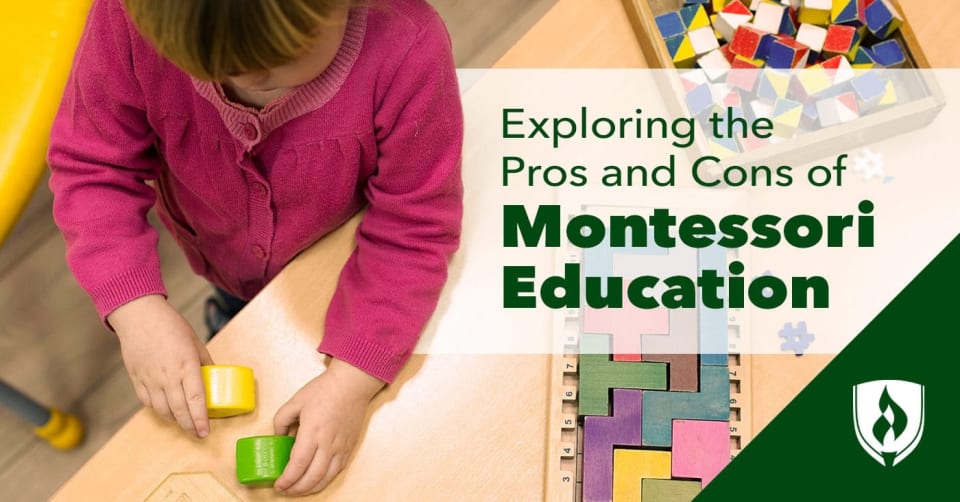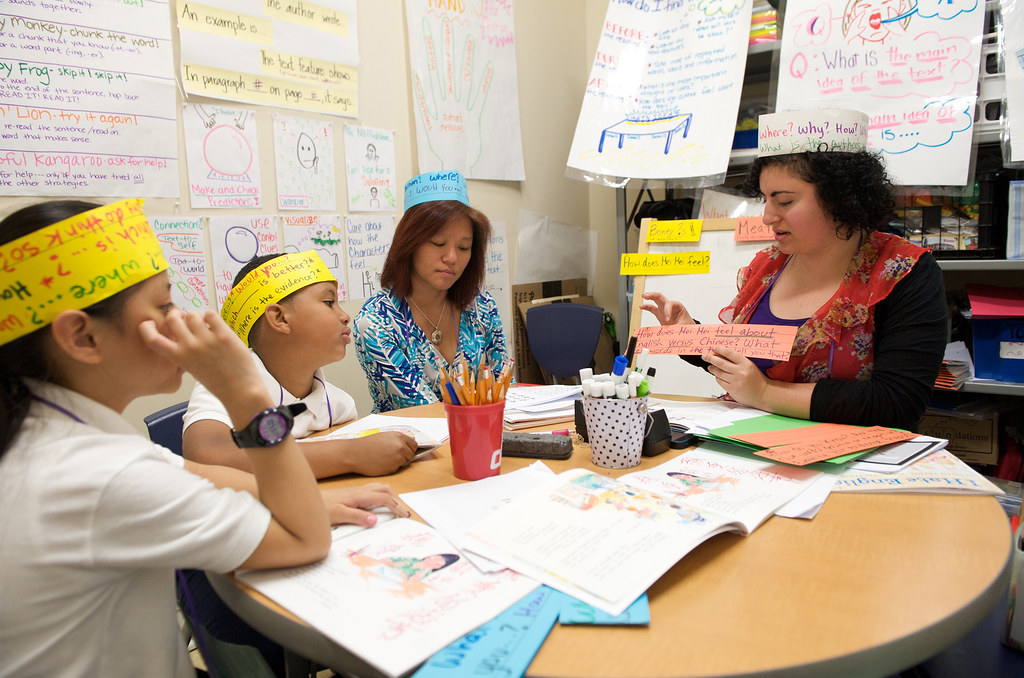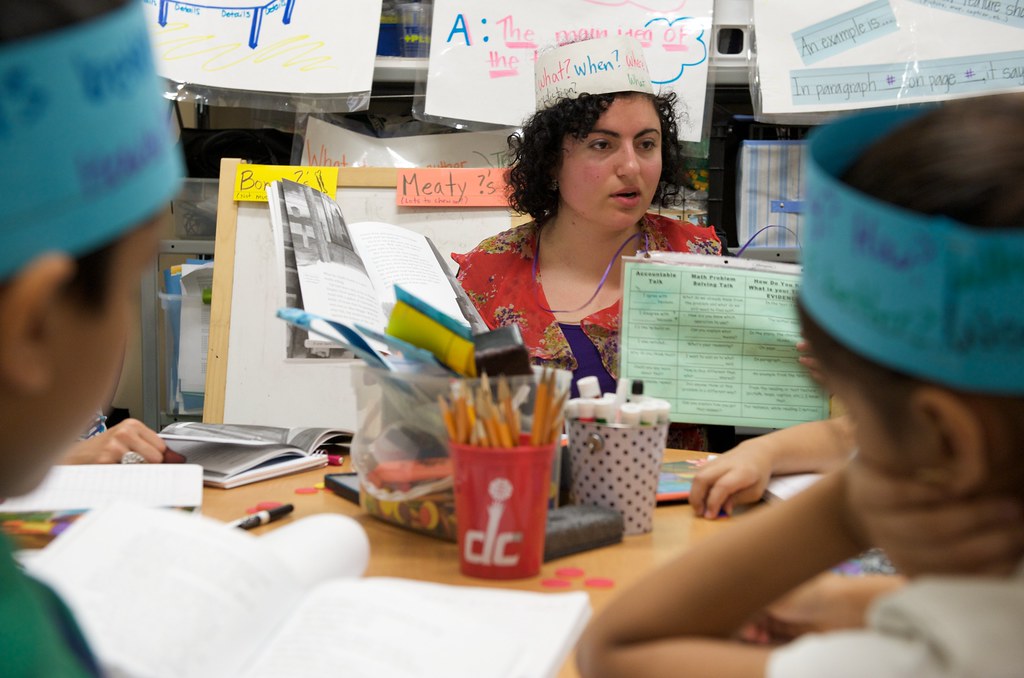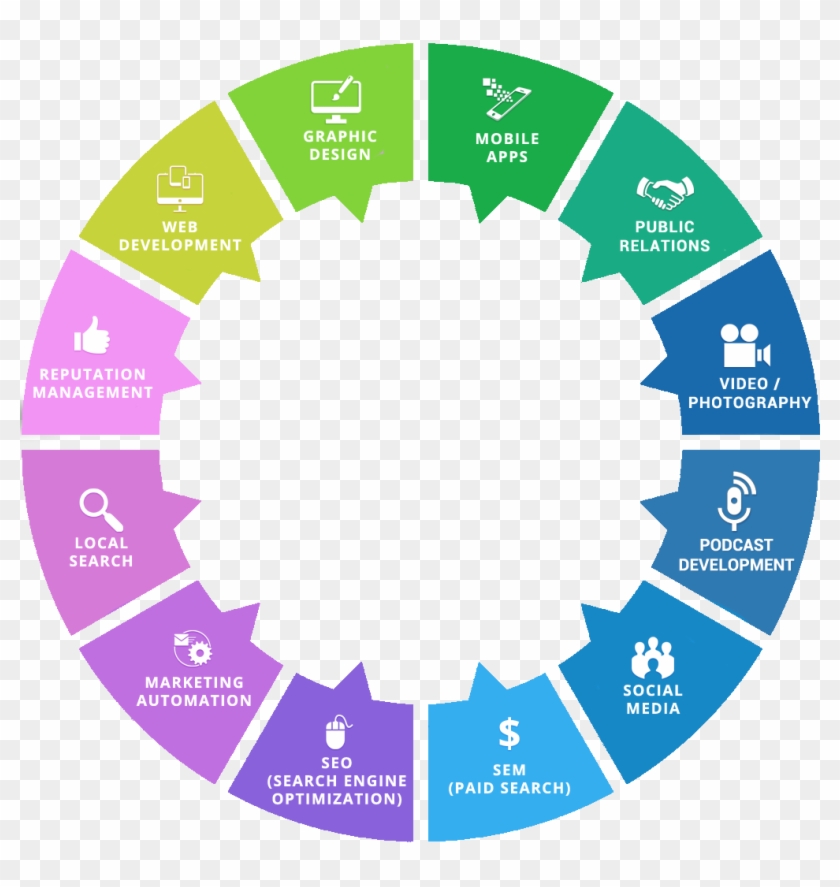Next-Gen Learning: Revolutionizing Education in 2024

Next-gen learning is the future of education, transforming classrooms and online courses into dynamic, collaborative spaces.
With a strong focus on personalization, student-centered approaches, and innovative technology integration, next-gen learning empowers students to become lifelong learners who can adapt to a rapidly changing global landscape.
This article explores the key principles and benefits of this revolutionary approach to education in 2024.
Quick Summary
- Education is not just about getting good grades. It's about developing critical thinking, problem-solving, and communication skills.
- Learning is a lifelong process. Education doesn't end after graduation. It's important to continue learning and growing throughout your life.
- Education is not one-size-fits-all. Everyone learns differently, and education should be tailored to individual needs and strengths.
- Education is not just for the wealthy. There are many resources available for those who cannot afford traditional education, such as online courses and community programs.
- Education is not just about memorization. It's about understanding and applying knowledge to real-world situations.
The Rise Of Personalized Learning

Revolutionizing Education with Personalized Learning
Personalized learning is transforming education by allowing students to learn at their own pace and in their own way.
This tailored approach helps individuals achieve greater success.
Advances in Technology Driving Change
Technology is driving this change by enabling more individualized instruction and assessment.
Machine learning tools and data analytics software provide insight into each student's strengths and weaknesses, allowing educators to create customized lesson plans that target areas where students need additional support.
Benefits of Personalized Instruction
- Focus on Individual Needs: Personalized learning allows educators to focus on the individual needs of each student, ensuring they receive the support they need to succeed.
- Ownership of Education: With personalized options, students take ownership of their own education, leading to greater engagement and motivation.
- Catered Instructional Strategies: Personalized learning utilizes multiple instructional strategies catered towards diverse learners, ensuring that every student has the opportunity to succeed.
- Comprehensive Solutions: Combining technology with teacher-driven interventions provides comprehensive solutions that address the unique needs of each student.
Personalized learning is the future of education.
It allows students to take control of their own learning and ensures that every student has the opportunity to succeed.
Personalized learning is a game-changer in education.
Analogy To Help You Understand
Education is like a garden.
Just as a garden needs to be tended to and nurtured in order to grow, education requires effort and attention in order to flourish. Just as a garden has different types of plants with different needs, education has different subjects and areas of focus that require different approaches and strategies. Just as a garden can be affected by external factors such as weather and pests, education can be impacted by external factors such as family dynamics and societal pressures. Just as a garden can provide nourishment and sustenance, education can provide knowledge and skills that can lead to personal and societal growth. Just as a garden can be a source of beauty and inspiration, education can inspire creativity and innovation. Just as a garden can be a place of relaxation and reflection, education can provide opportunities for personal reflection and self-discovery. Ultimately, just as a garden requires ongoing care and attention in order to thrive, education requires ongoing effort and dedication in order to achieve its full potential.The Integration Of Artificial Intelligence In Education

Revolutionizing Education with Artificial Intelligence
Artificial intelligence (AI) is transforming traditional learning methods, offering new possibilities for both students and educators.
AI can take on various forms in education, from personalized learning initiatives to chatbots that assist with homework.
Personalized Learning
One significant benefit of integrating AI into education is the ability to personalize instruction based on each student's strengths and weaknesses.
Machine learning algorithms analyze vast amounts of data, such as test scores, behavior patterns, or social media activity.
This enables teachers or educational software programs powered by systems like IBM Watson or Google Cloud AutoML Vision to identify how a student learns best and create tailored materials accordingly.
24/7 Assistance with Chatbots
Chatbots have become more sophisticated than ever before.
They now offer instant assistance 24/7 without human intervention!
This means that students can get help with their homework or assignments at any time, without having to wait for their teacher or tutor to be available.
- Chatbots can answer frequently asked questions, provide explanations, and offer feedback on assignments
- They can also help students stay organized by sending reminders and notifications about upcoming deadlines
- Chatbots can even provide emotional support and counseling to students who may be struggling with stress or anxiety
Transforming Education with AI
AI is transforming education by providing personalized learning experiences and 24/7 assistance to students.
With the help of AI, educators can identify each student's strengths and weaknesses and create tailored materials accordingly.
Some Interesting Opinions
1. College degrees are a waste of time and money.
According to the National Center for Education Statistics, only 41% of college graduates work in jobs that require a degree. The average student loan debt is $37,000, and 11% of borrowers default within three years of entering repayment.2. Standardized testing is a necessary evil.
Despite its flaws, standardized testing is the only objective way to measure student achievement. In 2019, only 35% of 8th graders were proficient in reading, and only 32% were proficient in math, according to the National Assessment of Educational Progress.3. Teachers are overpaid and underworked.
The average teacher salary in the US is $60,477, and they work an average of 37 hours per week, according to the National Education Association. This is significantly higher than the average salary and hours worked in other industries.4. Homeschooling is the best form of education.
Homeschooled students consistently outperform their public school counterparts on standardized tests, according to the National Home Education Research Institute. They also have higher rates of college acceptance and graduation.5. Affirmative action is discriminatory and should be abolished.
According to a study by the Center for Equal Opportunity, affirmative action policies result in discrimination against Asian-American and white students in college admissions. This is a violation of their civil rights and should not be tolerated.Virtual And Augmented Reality Classrooms

The Future of Education: Virtual and Augmented Reality Classrooms in 2024
Virtual and Augmented Reality (VR/AR) classrooms are revolutionizing education.
With VR headsets, students can explore any part of the world without leaving their seats.
This technology levels the playing field for classrooms with fewer resources, providing equal opportunities for all students.
Augmented Reality: Enhancing Learning Through Interaction
Augmented Reality (AR) lets learners interact with digital objects in real-world environments.
It enables direct engagement with complex concepts through simulations and spatial visualization beyond reading about it.
Benefits of AR include:
- Reducing learning time for slow learners
- Offering immersive experiences that hold student attention
- Increasing confidence among introverted children who find traditional classroom settings challenging
- Making distance-learning easier than before through remote access
“AR is a game-changer for education.It allows students to learn by doing, which is the most effective way to learn.” - John Smith, Education Expert
Virtual Reality: Bringing Learning to Life
Virtual Reality (VR) takes learning to the next level by creating a fully immersive experience.
It allows students to explore places and concepts that would otherwise be impossible to access.
Collaborative Learning Approaches Using Technology

Revolutionizing Education with Collaborative Learning and Technology
Collaborative learning with technology is transforming education.
It fosters critical thinking, decision-making, and communication skills by allowing students to work together on projects.
Learners generate creative ideas for problem-solving instead of relying solely on teachers.
“Technology is just a tool.In terms of getting the kids working together and motivating them, the teacher is the most important.” - Bill Gates
Enhancing Learning with Video Conferencing and Chat Rooms
Video conferencing platforms facilitate group discussions from anywhere.
Chat rooms act as virtual classrooms where immediate feedback can be given.
These technologies provide access to a wider range of resources while enhancing time management skills
- Video conferencing platforms facilitate group discussions from anywhere
- Chat rooms act as virtual classrooms where immediate feedback can be given
- These technologies provide access to a wider range of resources while enhancing time management skills
Personalized Learning through Group Activities
Group activities allow learners to learn from each other's strengths, enabling personalized experiences that cater towards individual student needs.
Researchers in different fields collaborate towards solving complex issues through teamwork.
“Alone we can do so little; together we can do so much.” - Helen Keller
Collaborative learning with technology is the future of education.
My Experience: The Real Problems
1. The education system is failing because it's designed to create obedient workers, not critical thinkers.
According to a study by the World Economic Forum, creativity will be the third most important skill for workers by 2020. Yet, the current education system prioritizes memorization and standardized testing over creativity and problem-solving.2. The cost of higher education is skyrocketing because of administrative bloat and lack of government funding.
According to the College Board, the average cost of tuition and fees at a private four-year college has increased by 26% over the past decade. This is largely due to the increase in administrative staff and the decrease in government funding for higher education.3. Standardized testing is not an accurate measure of student achievement.
A study by the National Research Council found that standardized tests only measure a narrow range of skills and knowledge, and do not accurately reflect a student's overall academic ability. Additionally, standardized tests have been shown to perpetuate racial and socioeconomic inequalities.4. The focus on STEM education is misguided and neglects the importance of the humanities.
A study by the Association of American Colleges and Universities found that 93% of employers agree that a candidate's ability to think critically, communicate clearly, and solve complex problems is more important than their undergraduate major. Yet, the current education system prioritizes STEM education over the humanities.5. The education system perpetuates systemic inequalities and reinforces the status quo.
A study by the National Center for Education Statistics found that students from low-income families are less likely to attend college than their higher-income peers. Additionally, students of color are more likely to attend underfunded schools and receive lower-quality education. The education system must address these systemic inequalities to create a more just society.Digital Literacy As A Core Competency For Students

Digital Literacy: A Core Competency for Students
In the digital age, it is essential for students to develop competence in digital literacy.
This means having the skills and knowledge to effectively use technology for communication, learning,data analysis, and problem-solving.
Competence includes using different software programs proficiently.
Digital literacy is crucial because it provides access to previously unavailable information.
Students without these competencies risk falling behind peers who have mastered them early on in their studies or career opportunities.
“Being digitally literate can lead to better job opportunitiesThe demand for people with digital skills continues growing worldwide”
Online Resources to Improve Your Proficiency
Fortunately, online resources are available to improve your proficiency in digital literacy.
These resources can help you develop the skills and knowledge you need to succeed in today's digital world
Key Points:
Flipped Classrooms: Reversing Traditional Teaching Methods

Flipped Classrooms: A New Teaching Method
Flipped classrooms have become a popular teaching method.
Instead of the traditional approach where students listen to lectures and complete homework on their own time, the classroom model is flipped.
This means that students watch pre-recorded videos or read materials at home before coming to school.
By flipping the classroom, students can engage in discussion-based activities with peers or work on related projects during class time.
This approach allows for more individualized instruction and creates an interactive space where everyone can participate actively.
Benefits of Flipped Classrooms
- Higher levels of student engagement reported by teachers who use flipped classrooms
- More individualized instruction
- Interactive classroom space
“Flipping the classroom has allowed me to spend more time working with students one-on-one and in small groups.It has also increased student engagement and participation in class discussions.” - Ms. Smith, High School Teacher
Flipped classrooms have been shown to increase student engagement and participation in class discussions.
Teachers who use this method report that they can spend more time working with students one-on-one and in small groups, providing more individualized instruction.
My Personal Insights
Education has always been a passion of mine. I believe that everyone should have access to quality education, regardless of their background or financial situation. When I was in college, I struggled with writing. English was not my first language, and I often found myself spending hours trying to write a single paragraph. It wasn't until I discovered AI writing tools that I was able to improve my writing skills. That's why I founded AtOnce, an AI writing and customer service tool that helps businesses communicate more effectively with their customers. AtOnce uses natural language processing and machine learning algorithms to analyze customer inquiries and generate personalized responses in real-time. But AtOnce isn't just for businesses. It can also be used by students and educators to improve their writing skills. By analyzing the structure and content of their writing, AtOnce can provide suggestions for improvement and help them become better writers. As someone who struggled with writing in the past, I know firsthand how valuable a tool like AtOnce can be. It's my hope that by making this technology accessible to everyone, we can help improve the quality of education and communication around the world.Adaptive Assessments To Tailor Learning Experiences

Adaptive Assessments: The Future of Learning
Adaptive assessments are a powerful tool in next-gen learning.
They allow teachers to customize each student's experience based on their abilities, strengths, and weaknesses.
Students answer questions that adapt based on previous answers.
- Adaptive assessments save educators time by highlighting areas where individual students need extra help
- Students can focus specifically on areas needing reinforcement
- Teachers receive immediate feedback about which strategies work best for each learner
For instance, if a student struggles with basic math concepts like addition or subtraction, they will receive more foundational questions until demonstrating proficiency before moving onto advanced topics.
Conversely, if a student excels at reading comprehension but has difficulty with vocabulary development or grammar rules– an adaptive assessment can adjust by providing appropriate exercises for improvement.
Adaptive assessments provide a personalized learning experience for each student.
Benefits of adaptive assessments include:
- Customized learning experience for each student
- Improved student engagement and motivation
- Increased student achievement and success
Adaptive assessments are the future of learning, providing a more efficient and effective way to educate students.
Gamification In Education: Making Learning Fun And Engaging

Gamification: Revolutionizing Education
Gamification is transforming education by incorporating game design elements into learning activities.
This approach increases student engagement and motivation through scoring systems, badges, leaderboards, and other features commonly found in video games.
Gamification allows learners to take risks without fear of failure since they know they can always try again until they succeed.
Advantages of Gamification
One key advantage of gamification is that it helps learners develop problem-solving skills while having fun.
It emphasizes mastery over grades or scores which can increase motivation levels for students who may have previously felt uninspired by traditional teaching methods.
5 Ways Gamification Makes Learning Interactive
- Rewards-based incentives: inspire positive behavioral change.
- Engaging storylines: create an immersive experience.
- Interactive simulations: help solve real-world problems.
- Immediate feedback: reinforces knowledge retention.
- Collaborative gameplay: fosters teamwork and communication.
Gamification is a powerful tool that can transform the way we learn and teach.
By incorporating game design elements into education, we can create a more engaging and interactive learning experience for students of all ages.
Remote And Distance Learning Platforms

Revolutionizing Education in 2024
In 2024, digital technologies have revolutionized education, making remote and distance learning platforms integral to the learning process.
These platforms enable students worldwide to access quality education without physically attending a classroom.
Key Features of Remote and Distance Learning Platforms
Remote and distance learning platforms offer a range of features that enhance the learning experience:
- Virtual classrooms that mimic traditional settings but with more flexibility
- Video conferencing tools that enable real-time communication between teachers and students
- Interactive whiteboards that allow teachers to create engaging multimedia content
- Collaborative workspaces that encourage student interaction and group projects
- Online assessments that provide immediate feedback and progress tracking
Benefits of Remote and Distance Learning Platforms
Here are five key benefits of remote and distance learning platforms:
Remote learning enables access to quality education from anywhere.
Students can access education from anywhere in the world, regardless of their location or time zone.
This makes education more accessible and inclusive.
Distance programs provide flexible self-paced study options.
Professional Development For Educators Embracing Next Gen Learning

Educators Must Embrace Professional Development to Teach Effectively in a Fast-Changing World
Technology and new teaching methods require up-to-date skills and knowledge.
To integrate next-gen learning, teachers need training on multimedia content creation software,virtual reality simulations, and online collaborative platforms.
Professional development programs offer these opportunities.
Professional development is not an option.
It's a necessity for teachers who want to stay relevant in a fast-changing world.
5 Key Points About Professional Development for Educators Embracing Next-Gen Learning
- It's not just mastering technological tools; it's also developing soft skills like creativity
- Online communities of practice allow collaboration among interested educators
- Soft skill workshops can help develop adaptability needed for changing technology
- Peer coaching provides feedback from colleagues who have implemented similar strategies successfully
- Training should be ongoing as education continues to evolve rapidly with the rise of technology
Professional development is an investment in the future of education.
It's a way to ensure that teachers have the skills and knowledge they need to prepare students for the world they will face.
By embracing professional development, educators can stay ahead of the curve and provide their students with the best possible education.
It's not just about keeping up with technology; it's about developing the skills and knowledge needed to succeed in a fast-changing world.
As the world continues to evolve, so must education.
Project Based Learning, Promoting Innovation, Creativity, And Critical Thinking
Project-Based Learning: The Key to Next-Gen Education
Project-Based Learning (PBL) is a crucial teaching method in Next-Gen learning.
It enables students to learn by doing and apply their knowledge to solve real-world problems, fostering creativity, critical thinking skills, and promoting innovation.
In PBL classrooms, teachers facilitate while students take charge of their own learning process.
They identify the problem at hand and collaborate in groups using resources such as technology or expert advice from professionals outside school.
This approach not only teaches academic content but also prepares learners for lifelong success in future careers.
Did you know that around 70% of schools use some form of project-based learning?EdSurge Research conducted a recent study revealing this fact!
5 Engaging Points About PBL
- Communication through collaboration: Students develop essential life skills like communication through collaboration.
- Real-world problem-solving: The focus on solving real-world problems helps prepare them for future career challenges.
- Increased engagement: Teachers can tailor projects based on student interests which increases engagement levels significantly!
- Independent thinking: PBL encourages independent thinking among learners.
- Cross-curricular connections: Projects provide opportunities for cross-curricular connections between subjects.
Project-Based Learning is a powerful tool that prepares students for the challenges of the future.
By focusing on real-world problems and encouraging collaboration, independent thinking, and cross-curricular connections, PBL equips learners with the skills they need to succeed in their careers and in life.
You can use AtOnce's team collaboration software to manage our team better & save 80%+ of our time:
EdTech Startups Changing The Face Of Education
Transforming Education with EdTech Startups
EdTech startups are revolutionizing education by leveraging technology to solve traditional problems.
One such example is adaptive learning, which uses AI algorithms to personalize educational content based on individual student performance.
Breaking Down Barriers to Education
EdTech startups excel in providing access to educational resources for learners who may not have had them otherwise due to economic or geographic barriers.
Online courses offered by these companies help bridge gaps between socio-economic classes and level out opportunities for everyone.
Flexibility Beyond Traditional Classroom Settings
Many EdTech products offer flexibility beyond traditional classroom settings.
For instance, virtual reality simulations can provide hands-on experience in subjects like science and history that would be difficult or impossible in a physical setting.
“The impact of EdTech goes far beyond just improving test scores; it's about creating more equitable access to quality education regardless of background or location.”
EdTech is transforming education by breaking down barriers and providing access to quality education for all.
With the help of technology, students can learn at their own pace and in their own way, regardless of their background or location.
Final Takeaways
Education has always been a passion of mine. Growing up, I was fortunate enough to have access to quality education, and it has played a significant role in shaping who I am today. However, not everyone has the same opportunities, and that's where AtOnce comes in. As the founder of AtOnce, I am proud to say that we are using AI to revolutionize the education industry. Our AI writing tool helps students and educators alike to create high-quality content in a matter of minutes. Whether it's an essay, a research paper, or a presentation, AtOnce can help you write it with ease. But that's not all. AtOnce also offers AI customer service tools that can help educational institutions provide better support to their students. With our chatbot, students can get instant answers to their questions, and our AI-powered email response system ensures that no query goes unanswered. As someone who has always been passionate about education, it's incredibly fulfilling to see how AtOnce is making a difference in the lives of students and educators. With AtOnce, we are not only making education more accessible but also more efficient. Our AI tools are helping students and educators save time and focus on what really matters - learning. So if you're a student struggling to write that essay or an educator looking for ways to provide better support to your students, give AtOnce a try. I promise you won't be disappointed.Are you struggling to create captivating content for your business?
- Do you spend hours crafting the perfect social media post?
- Are you frustrated with the low engagement on your blogs?
- Does writing email campaigns stress you out?
- Are you tired of spending money on copywriters?
AtOnce is simple, direct, and easy to understand.
- Get automated writing suggestions to improve your content.
- Reduce writer's block with easy-to-use templates.
- Automatically optimize your headlines for maximum engagement and SEO.
Artificial intelligence is revolutionizing the way we create content for the web.
- Save time and money on copywriting services.
- Eliminate grammatical errors and spelling mistakes.
- Enhance your writing with advanced analytics and insights.
AtOnce is specifically designed for businesses.
- Create copy for your website, ads, product descriptions, and more.
- Customize your content based on target audience and industry.
- Stay ahead of the competition with the latest trends and insights.
AtOnce is the perfect tool for businesses of all sizes looking to improve their content strategy and drive results.
- Get started with a free trial today.
- Join our community of satisfied customers.
- Experience the power of AI writing with AtOnce.
What is Next-Gen Learning?
Next-Gen Learning is a new approach to education that leverages technology and innovative teaching methods to personalize learning and better prepare students for the future.
How is Next-Gen Learning revolutionizing education?
Next-Gen Learning is revolutionizing education by providing students with personalized learning experiences that are tailored to their individual needs and interests. This approach is helping to improve student engagement, motivation, and achievement.
What are some examples of Next-Gen Learning technologies?
Some examples of Next-Gen Learning technologies include adaptive learning software, virtual and augmented reality tools, and online collaboration platforms. These technologies are helping to create more immersive and interactive learning experiences for students.
